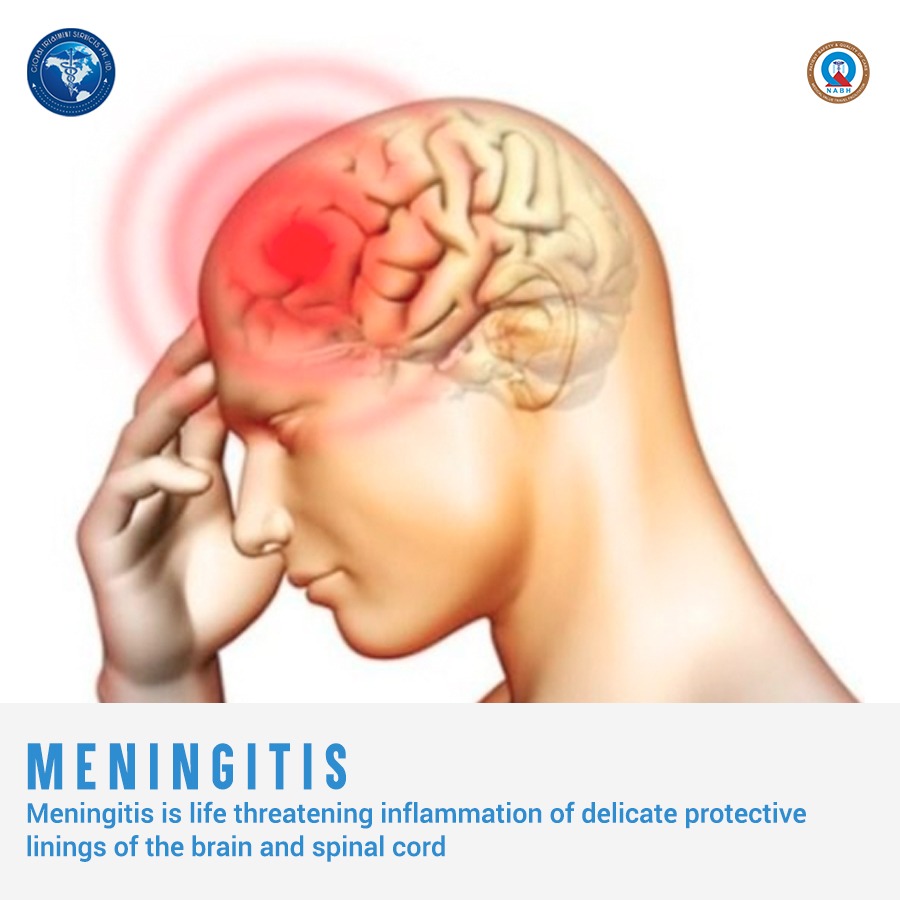Meningitis is deadly that it can kill in a matter of hours.Though some cases of meningitis improve without treatment,others can be life-threatening and require emergency treatment.
Meningitis occur when the fluid surrounding the meningis become infected causing inflamamtion of meningis. Meningis are three delicate protective membranes of brain and spinal cord.
Causes
Meningitis is caused by bacterial,viral or fungal infection,viral infected ideas being the most common.It can also be caused by other factors such as cancer,drug irritations.Like any other infection,meningitis can be contagious too which can be transmitted through touch,sneezing etc.
Bacterial meningitis
Though it is rare,it can be fatal if not treated right away.Bacterial meningitis can cause stroke, hearing loss, and permanent brain damage.The disease can occur when certain bacteria invade the meninges directly or when the bacteria spread to the meninges from a severe head trauma or a severe local infection, such as a serious ear infectionor nasal sinus infection (sinusitis).Several bacteria can first cause an upper respiratory tract infection and then travel to brain via bloodstream.
- Pneumococcal meningitis is the most serious form of bacterial meningitis,caused by the bacterium Streptococcus pneumoniae.It also causes pneumonia, blood poisoning (septicemia), and ear and sinus infections.
- Meningococcal meningitis is caused by the bacterium Neisseria meningitides. If diagnosed, people in close contact should be given preventative antibiotics.
- Haemophilus influenzae meningitis.
Viral meningitis
Also called aseptic meningitis ,it is usually caused by common viruses that enter the body through the mouth and travel to the brain and surrounding tissues.Many of the enteroviruses viruses that cause meningitis are common, such as those that cause colds, diarrhea and the flu.Other viruses that cause meningitis include varicella zoster (chicken pox virus),, mumps, HIV, and herpes simplex type 2 (genital herpes).
Fungal meningitis
The most common of this is caused by the fungus cryptococcus neoformans(found mainly in dirt and bird droppings). Fungal infectionns can affect brain.Although treatable, fungal meningitis often recurs in 50 % of the affected persons.
Meningitis can affect anyone .Children,people with weakened immune systems( including persons with HIV or taking immunosuppressant drugs) are at increased risk.
Symptoms
Significant signs of meningitis are
- sudden fever
- severe headache
- nausea or vomiting
- double vision, drowsiness
- sensitivity to bright light
- stiff neck.
In infants ,fever, lethargy, not waking for feedings, vomiting, body stiffness, unexplained irritability, and bulging fontanel (the soft spot on the top of the head) are important signs of meningitis and should be watched for.
Distinctive rashes called meningitis rash are seen in some forms of the disease.This is one late sign of bacterial meningitis.These are faint rashes and may not be easily visible in dark skinned people.Rash will become more obvious as infection worsen and spots grow darker. Meningococcal meningitis damages capillary cells leading to capillary damage and mild blood leaks.
Meningitis can also cause septicaemia.It is the blood poisoning caused by the same germs that cause meningitis.It is the more life threatening form of the disease. Septicaemia can occur with or without meningitis.
Diagnosis
Early diagnosis is vital, as symptoms can appear suddenly and escalate to brain damage, hearing and/or speech loss, blindness, or even death.
Diagnostic tests include:
- series of physical examination tests designed to assess motor and sensory function, nerve function, hearing and speech, vision, coordination and balance, mental status, and changes in mood or behavior.
- screening of blood, urine, and body secretions can help detect and identify brain and/or spinal cord infection.
- Cerebrospinal fluid is tapped to detect the presence of bacteria, blood, and viruses. Analysis of the fluid can also reveal infections in the brain and/or spinal cord, acute and chronic inflammation, and other diseases.
Brain imaging is used to detect signs of brain inflammation, internal bleeding or hemorrhage.Following are noninvasive painless imaging procedures routinely used
- Computed tomography, also known as a CT scan to produce rapid, clear, two-dimensional images of organs, bones, and tissues.
- Magnetic resonance imaging (MRI) can help identify brain and spinal cord inflammation, infection, tumors, and other conditions.
Furthermore, electroencephalography(EEG) can identify abnormal brain and diagnose patterns that may suggest specific viral infections such as herpes virus and to detect seizures.
Treatment
Early treatment of bacterial meningitis involves antibiotics that can cross the blood-brain barrier . Appropriate and immediate antibiotic treatment for most types of meningitis can greatly reduce the risk casualties. Anticonvulsants to prevent seizures and corticosteroids to reduce brain inflammation may be prescribed.Infected sinuses may need to be drained. Corticosteroids such as prednisone are usually prescribed to relieve brain pressure, swelling and to prevent hearing loss that is common in Haemophilus influenza meningitis.Viral meningitis can ease without treatment over a few weeks.Fungal meningitis is treated with intravenous antifungal medications.
Vaccination
Vaccinations offer protection against certain causes of meningitis.These include the:
- meningitis B vaccine – offered to babies aged 8 weeks, followed by a second dose at 16 weeks, and a booster at 1 year
- 6-in-1 vaccine – offered to babies at 8, 12 and 16 weeks of age
- pneumococcal vaccine – offered to babies at 8 weeks, 16 weeks and 1 year old
- Hib/MenC vaccine – offered to babies at 1 year of age
- MMR vaccine – offered to babies at 1 year and a second dose at 3 years and 4 months
- meningitis ACWY vaccine – offered to teenagers, sixth formers and “fresher” students
Outcome generally depends on the the severity of the illness and how quickly treatment is given. In most cases, meningitis can make a full recovery although the process may be slow. Individuals may need long-term therapy, medication, and supportive care in more serious cases where disease has caused permanent damages like brain and nerve damage,blindness,memory loss,seizures,lack of muscle control etc

Post a comment